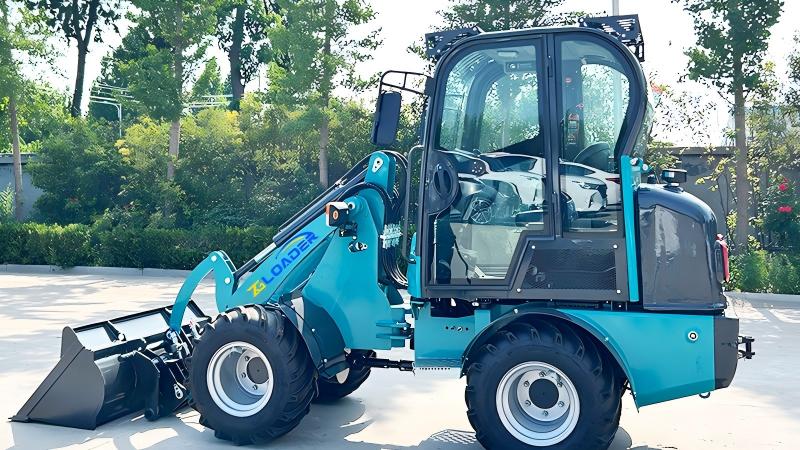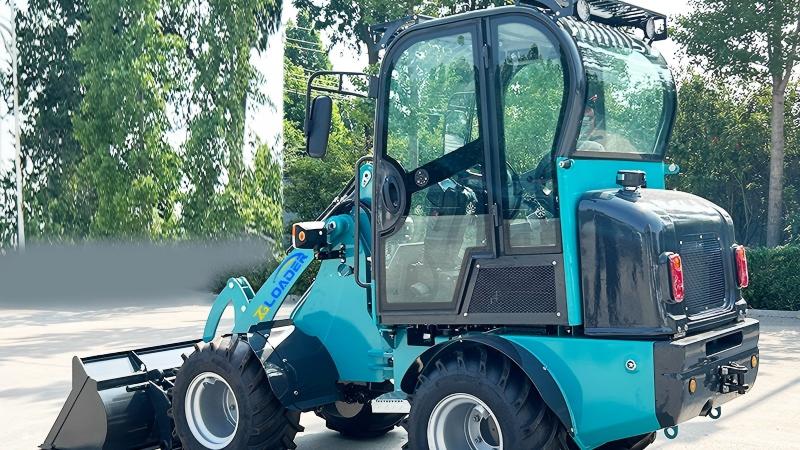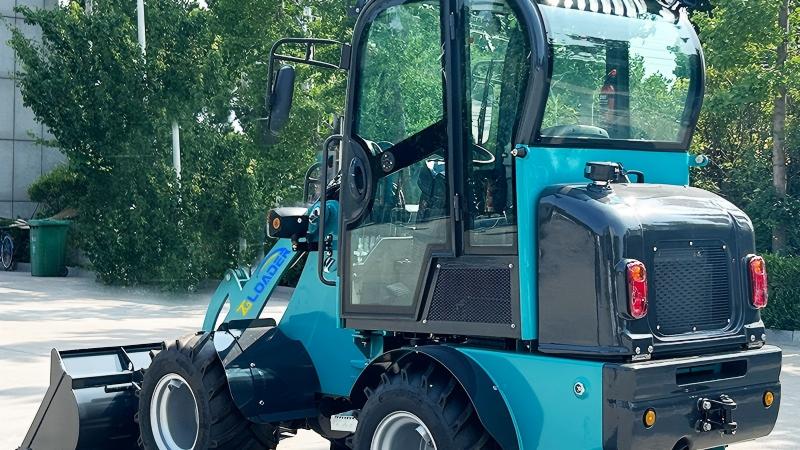The modern mid-sized Euro wheel loader, typically operating in the 2.5 to 5-ton payload range, is a masterpiece of integrated engineering, beginning with its highly sophisticated powertrain. At its core lies a turbocharged intercooled diesel engine, meticulously calibrated to meet the stringent EU Stage V (or U.S. Tier 5) emission regulations. This is not merely an add-on but a fundamental redesign of combustion philosophy. These engines often utilize a combination of High-Pressure Common Rail (HPCR) fuel injection for precise atomization and complete combustion, along with Exhaust Gas Recirculation (EGR) to lower combustion temperatures and reduce NOx formation. The most critical component, however, is the integrated aftertreatment system. This typically includes a Diesel Oxidation Catalyst (DOC), a Diesel Particulate Filter (DPF) that actively traps soot particles, and a Selective Catalytic Reduction (SCR) system that uses Diesel Exhaust Fluid (DEF) to convert NOx into harmless nitrogen and water. This complex symphony of technologies allows the engine to produce impressive power and torque—often ranging from 130 to 250 horsepower and over 600 Nm of torque—without sacrificing fuel efficiency or environmental compliance. The power is seamlessly transferred through a robust powershift transmission, offering 2 to 4 speeds in both forward and reverse, with soft-shift technology to eliminate jarring direction changes and reduce component stress. This entire powertrain is managed by a central Engine Control Unit (ECU) that continuously optimizes performance based on real-time load demands, ensuring that the machine delivers maximum productivity with minimal ecological impact, a non-negotiable requirement in today's regulated and environmentally conscious European market.
Beyond raw power, the defining characteristic of a best-in-class Euro wheel loader is the intelligence and responsiveness of its hydraulic system. This is where the machine transitions from a simple powerhouse to a precise tool. The industry standard for these models is a load-sensing, pressure-compensated (LSPC) hydraulic system. Unlike older constant-flow systems, an LSPC system automatically adjusts pump flow and pressure to meet the exact demand of the function being used, whether it's lifting the boom, tilting the bucket, or steering. This eliminates wasteful energy expenditure and significantly reduces fuel consumption. The heart of the loading mechanism is the iconic Z-bar linkage (or sometimes the parallel linkage). The Z-bar design provides exceptional breakout force and tear-out capability, crucial for digging into compacted material piles, while maintaining a parallel lift path that ensures minimal spillage during transport. These loaders generate breakout forces that can exceed 15,000 kg and lifting capacities that can surpass 5,000 kg, all while being controlled with joystick pilot hydraulics. This means the operator's physical input is minimal; small, precise movements of the joystick electronically or via low-pressure hydraulic signals command the powerful hydraulic cylinders, reducing fatigue and enabling pinpoint accuracy. Furthermore, many models feature advanced ride control systems that automatically cushion the boom and bucket hydraulically when transporting loads at speed, stabilizing the machine and allowing for faster cycle times without compromising safety or operator comfort.
Stepping into the cabin of a modern mid-sized Euro wheel loader reveals an environment more akin to a flight deck than a traditional construction vehicle, designed around the principles of ergonomics, comfort, and digital integration. The pressurized and climate-controlled cab is acoustically insulated to maintain noise levels well below 75 dB(A), a critical factor for operator concentration during long shifts. The seat is fully adjustable and often heated, while the multi-function joysticks place all essential controls—from lift and tilt to auxiliary hydraulics and often transmission control—at the operator's fingertips, minimizing repetitive movement. The centerpiece is a high-resolution, customizable LCD display that provides a comprehensive overview of all machine vitals: fuel consumption, fluid temperatures, DEF levels, DPF status, and maintenance alerts. This digital hub is the interface for the integrated telematics system, such as Caterpillar's Product Link, Volvo's CareTrack, or similar platforms from Liebherr and Komatsu. These systems transmit real-time data on location, fuel usage, productivity metrics, and machine health to a secure online portal, enabling fleet managers to optimize logistics, schedule preventive maintenance, and prevent unauthorized use. This connectivity, a cornerstone of the Industrial Internet of Things (IIoT), transforms the loader from an isolated asset into a data-rich node in a smart, efficient fleet management ecosystem, directly contributing to lower total cost of ownership.
The prowess of a wheel loader would be meaningless without a chassis and undercarriage built to withstand immense and constant stress. The mainframe of a mid-sized Euro loader is a fabricated box-section steel structure, engineered through Finite Element Analysis (FEA) to endure high dynamic loads and twisting forces without adding excessive weight. A key differentiator is the articulation joint, which allows for a tight turning radius, often under 20 feet. This joint uses robust kingpin and slew bearing designs to provide both flexibility and structural integrity. The axles are another critical component; heavy-duty planetary axles provide high torque multiplication and ground clearance. Many models feature limited-slip or no-spin differentials to maintain traction in challenging underfoot conditions. The axle load distribution is meticulously calculated to ensure optimal stability during loading and travel, with a significant portion of the weight over the rear axle for counterbalance when lifting heavy loads. Finally, unparalleled emphasis is placed on serviceability. Engine compartments are designed with wide-opening hoods, often with gas struts for easy access. Daily maintenance points like grease nipples, dipsticks, and filters are grouped and easily reachable from ground level. Diagnostic ports allow technicians to quickly interface with the machine's electronic control modules. This design philosophy prioritizes uptime by drastically reducing the time and cost of routine servicing and repairs, ensuring that the machine remains a reliable and profitable asset for its owner throughout its long operational life.
Post time:Oct.15.2025



